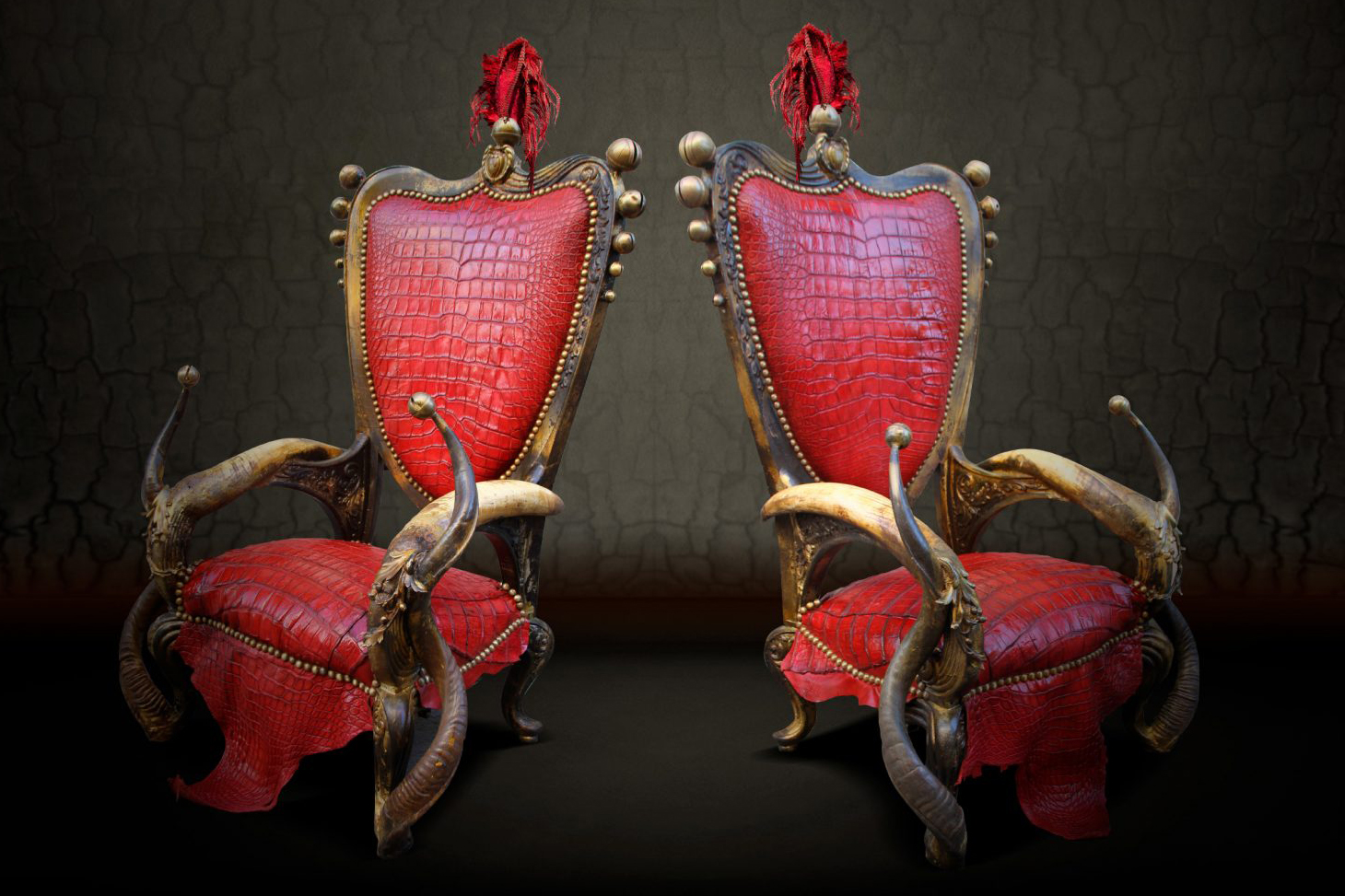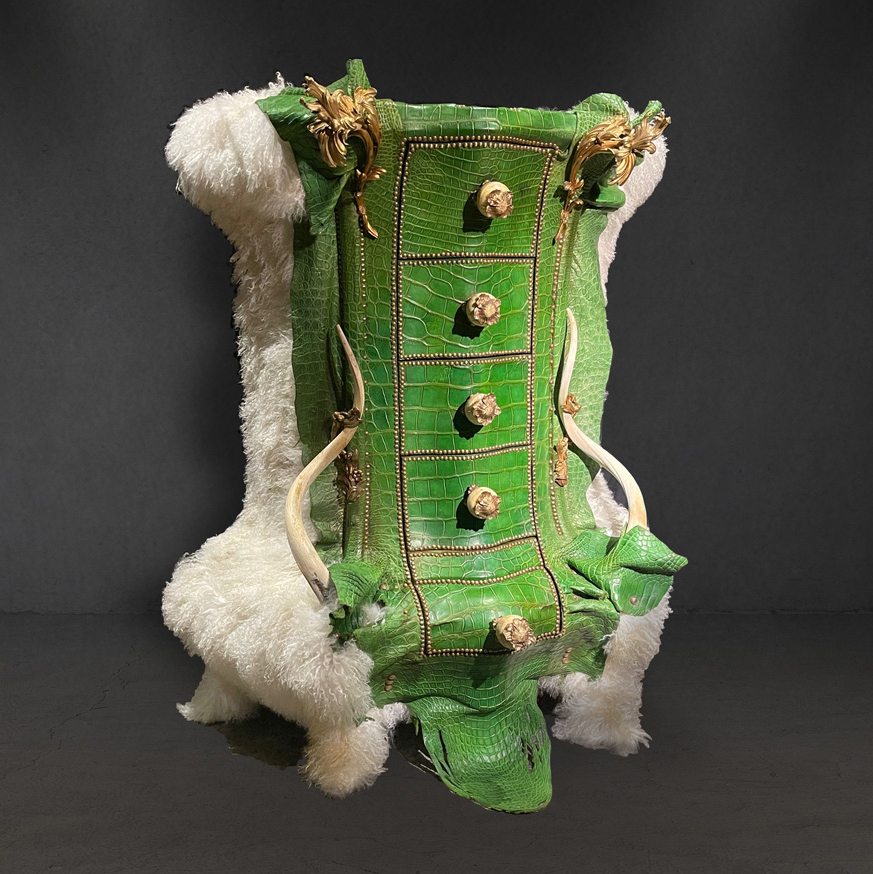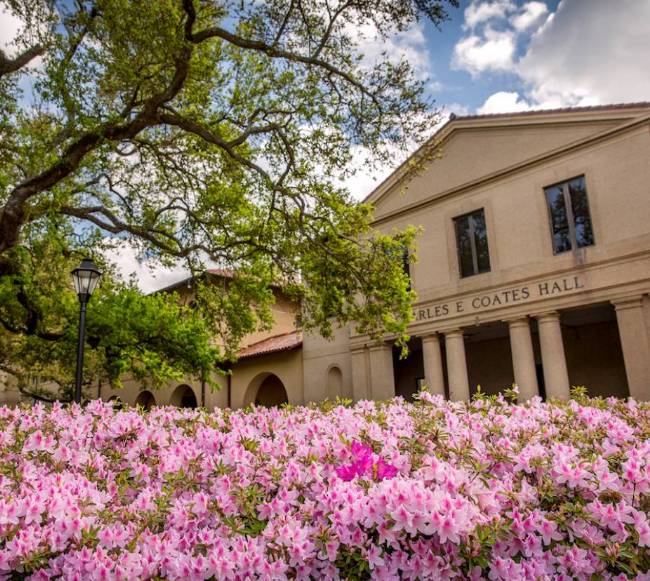Where the Wild Things Say ‘Bonjour’: Meet Artist Michel Haillard
February 04, 2025
French sculptor and collector Michel Haillard says power lies, and sits, in Louisiana alligator skins.

Michel Haillard's twin set of Caroll thrones featuring red Louisiana alligator skin, cow hide, horns, bronze accents, and pheasant feathers.
French sculptor and collector Michel Haillard will be in residence at LSU in Baton Rouge this February 22-27, hosted by the College of Art & Design. He will work in an open studio in the Barnes Ogden Art & Design Complex, with a reception on February 26 at 5:30 pm in the main gallery. He will also give a lecture about his work on February 24 at 5 pm in the Cox Auditorium next to the Huey P. Long Field House, where a documentary about his life and work will be shown.
Haillard creates thrones and other furniture using wood and exotic materials, such as Louisiana alligator skins, other animal hides and horns, tusks and bones. He has sold some of his pieces to the king of Morrocco and helped design the Canadian headquarters of Cirque de Soleil. But the last thing he wants is for his work to be called “luxury.”
Why are you coming to LSU and Louisiana?
Life consists of meetings and opportunities. I met LSU Professor of Art Darius Spieth in Paris. He came to see me at my stall at the market where I’ve been selling my work for the last three years, at the Porte de Clignancourt, which is one of the largest antiquities markets in Europe. I still work with galleries, but it was important for me to connect directly with the public and people from everywhere pass through there.
Darius told me he already had been talking about my work at LSU for several years, so that’s where the idea for my visit was born—by him passing by my window on the world.
I feel a certain affinity with Louisiana because I work with natural materials that come from there, and because of Louisiana’s French roots.
What do you look forward to doing while you’re here?
I’m going to create a new piece around an old Pac-Man arcade game that I’m going to cover in alligator skin. The idea is to take this very early video game from the ’80s that represents civilization and making it like a caveman game, very primary. It’s about contrast.
I also look forward to meeting alligator people. We will visit a farm and because it’s so complicated to import and export animal skins, I’m looking to make connections so the skins used for the pieces I build for my American customers can stay and be installed there.

Michel Haillard's Saladin chest of drawers features green Louisiana alligator and Mongolian lamb, horns, and bronze hardware.
Why this preference for working with Louisiana alligator skins?
Alligator skin is powerful. For my very first throne, I used skin from an old crocodile bag. Something called me to it. This type of skin gives power to the person who touches it. I then happened to find someone who traded in Louisiana alligator skins near the Rue du Faubourg Saint-Martin in Paris, on the docks. It was incredible. You would have thought you were in the Middle Ages. I felt like Ali Baba or Indiana Jones going there.
Animal skins give me energy, as an artist and as a person. And thanks to the policy of conservation and reintroduction of the alligator, particularly in Louisiana, the alligator is less endangered than the crocodile and therefore more ethical to work with.
What defines you as an artist?
I go with the flow, like a boat on the current. I’ve done all kinds of stuff, drawn cartoons and used objects to build different scenarios. How to let oneself go, that is the thing. It’s hard for people to have the confidence. There is too much fear and shame. Those are the two devils of our existence. The fear and the shame that prevent us from being. And death, death doesn’t exist since we’re all recycled as part of nature and just continue as matter in the universe.
The reason I don’t like my work to be called “luxury” is the idea that it’s refined. I’d rather be called “savage” because I work with nature, and we are nature. Humans are animals and it is only ego and illusion that prevent us from seeing that. We are all “other.”
I’ve learned that my work isn’t typical but also very universal. People need to feel connected and reconnect on a primal level. It’s the idea of being, and of being carried away.
Haillard’s visit is supported by the LSU College of Art & Design and the LSU AgCenter.
Next Step
LSU's Scholarship First Agenda is helping achieve health, prosperity, and security for Louisiana and the world.


